
MRG Labs follows grease sampling and analysis standards outlined in ASTM D7718 and ASTM D7918. Grease analysis is a valuable tool for determining the condition of the lubricant and discovering abnormal conditions in equipment that may otherwise lead to unexpected failures. Our customized grease test slates are designed to identify the specific failure modes that may be damaging the component. Each analysis report comes with comments and recommendations unique to the component to improve reliability.
BASIC GREASE ANALYSIS
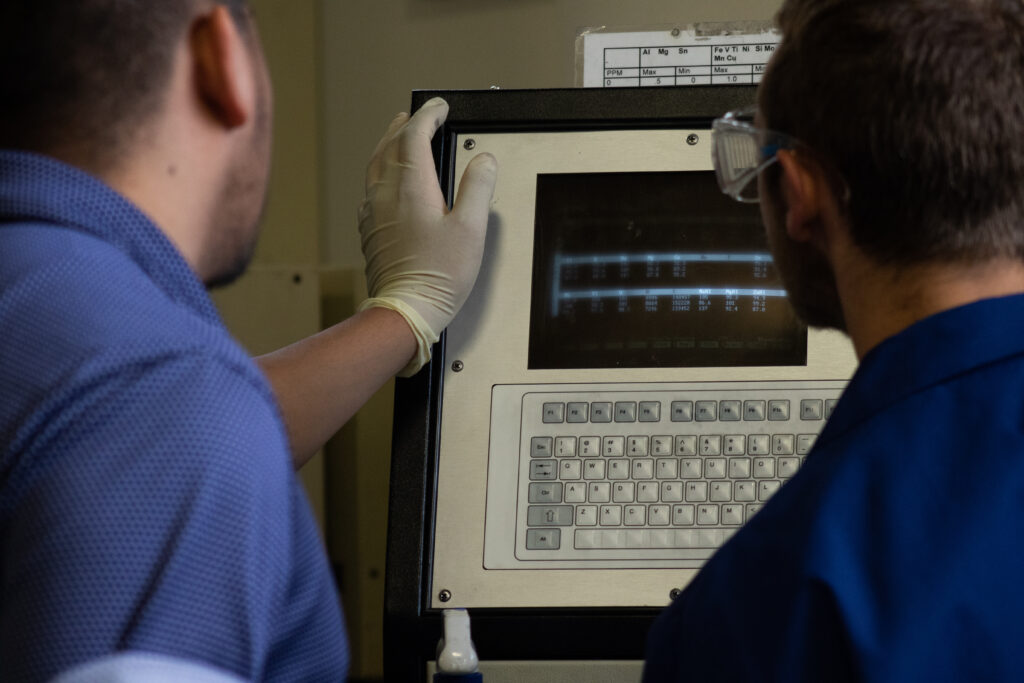
RDE Metals Spectroscopy
This atomic emission spectroscopy method quantifies the elements present in the lubricant. These elements include wear metals such as magnesium and phosphorus, copper and zinc, and grease thickeners such as calcium and sodium. This method can then be used to evaluate wear and contamination properties of a sample.
A small portion of the dissolved sample is ignited between two carbon electrodes. The wavelengths of light that are emitted by the sample as it burns are measured. These wavelengths of light and their relative intensity are used to quantify the individual elements present.
Ferrous Debris Analysis
The FerroQ is used to quantify the ferrous content of used grease samples. It is a primary indicator of wear levels.
The device uses an electromagnetic coil to measure iron content. The sensor detects the ferrous debris distributed throughout the entire sample as the Grease Thief is dropped into the instrument. This helps to avoid inaccurate results due to aliquoting the sample or instrumental particle size limitations, which are two major issues that can arise when using other methods to track wear levels. Results are reported in part per million (ppm).
Die Extrusion Testing
The consistency of a grease sample is measured using the innovative design of the Grease Thief and the Grease Thief Analyzer. This is then compared to the consistency of the baseline to generate the dimensionless Grease Thief Index, describing how the consistency of the grease has changed.
Grease is extruded from the Grease Thief through a small die and a force probe measures the force required to extrude the grease. Extrusion occurs at three speeds in order to create a consistency profile. This method allows grease consistency to be measured with only a gram of grease.
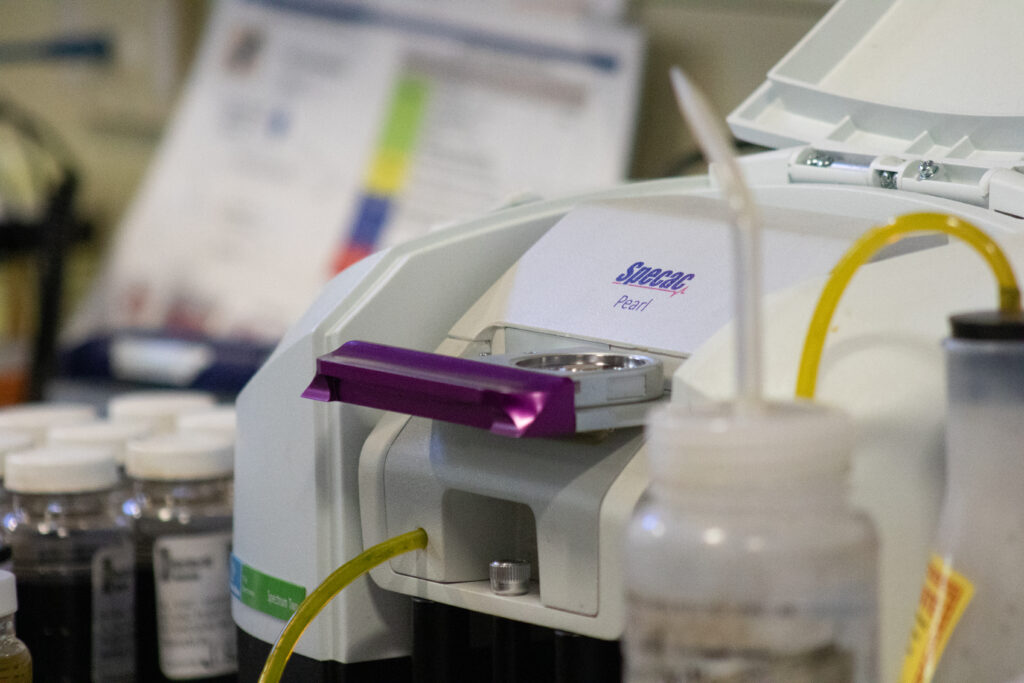
FT-IR Spectroscopy
FT-IR is used to determine the chemical properties of a compound in a qualitative manner. Oxidation products, contamination and mixing with incompatible greases are easily detected using this technique.
A small quantity of grease is subjected to a spectrum of infrared radiation. Specific wavelengths of infrared radiation excite the chemical bonds that make up the grease and generate a unique spectral fingerprint. This can then be compared to baseline data to determine chemical changes in grease composition.
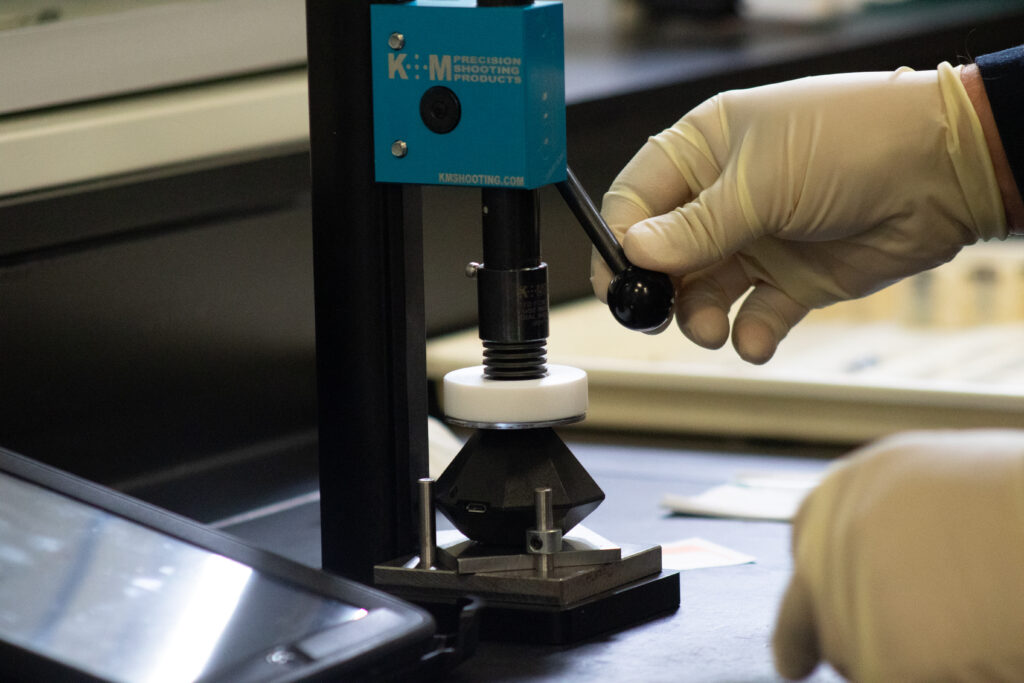
Colorimetry
This testing is used to validate observed appearance changes in grease, trend darkening due to aging or overheating, characterize dye formulations of new greases, and may even approximate the concentration of particulate contaminants accumulating in the grease.
A thin film of grease sample is loaded into a dark chamber and exposed to the spectrum of visible light (400-700nm). The relative intensity of the light that is absorbed at each wavelength is measured and an absorption spectrum graph is generated. The visible spectrum is a characteristic of grease color and can be used to indicate grease color changes that are not quantifiable by the human eye.
ADVANCED GREASE ANALYSIS
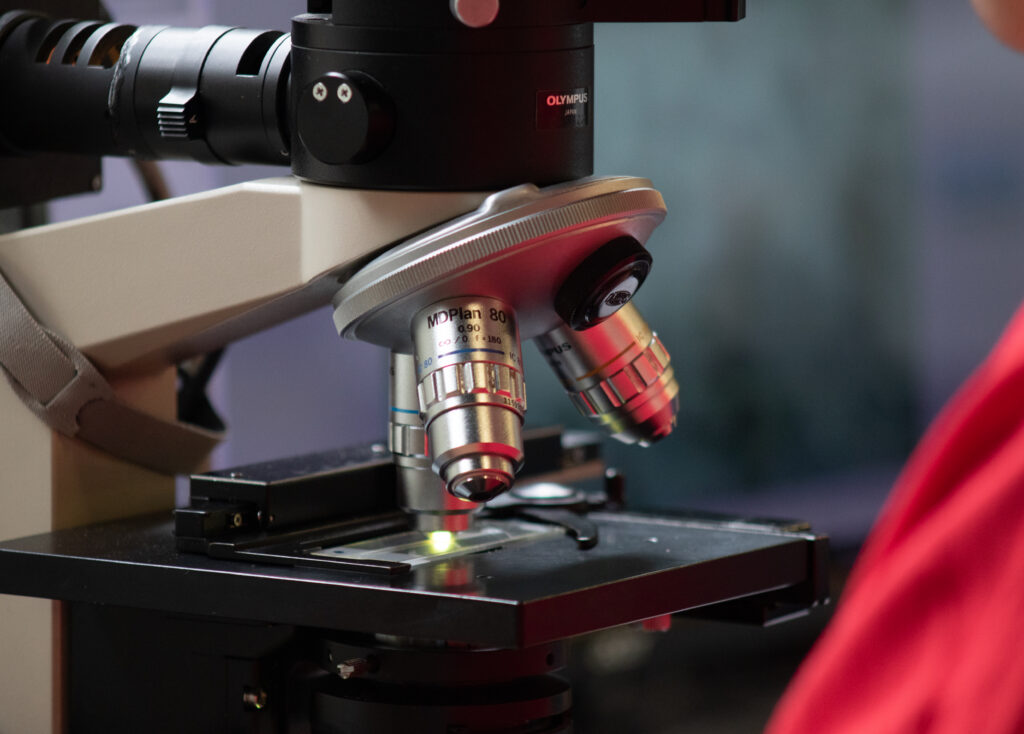
Analytical Ferrography
This process involves the examination of ferrous debris from a lubricant sample by a qualified laboratory analyst. The analyst may determine wear modes that generated wear specific particles and diagnose abnormal component conditions.
The lubricant is dissolved in an organic solvent and then slowly flows over a microscope slide that is subjected to a magnetic field. Ferrous particles are trapped on the slide while non-ferrous particles wash away. These particles are then examined under high magnification in order to assess generative wear modes.
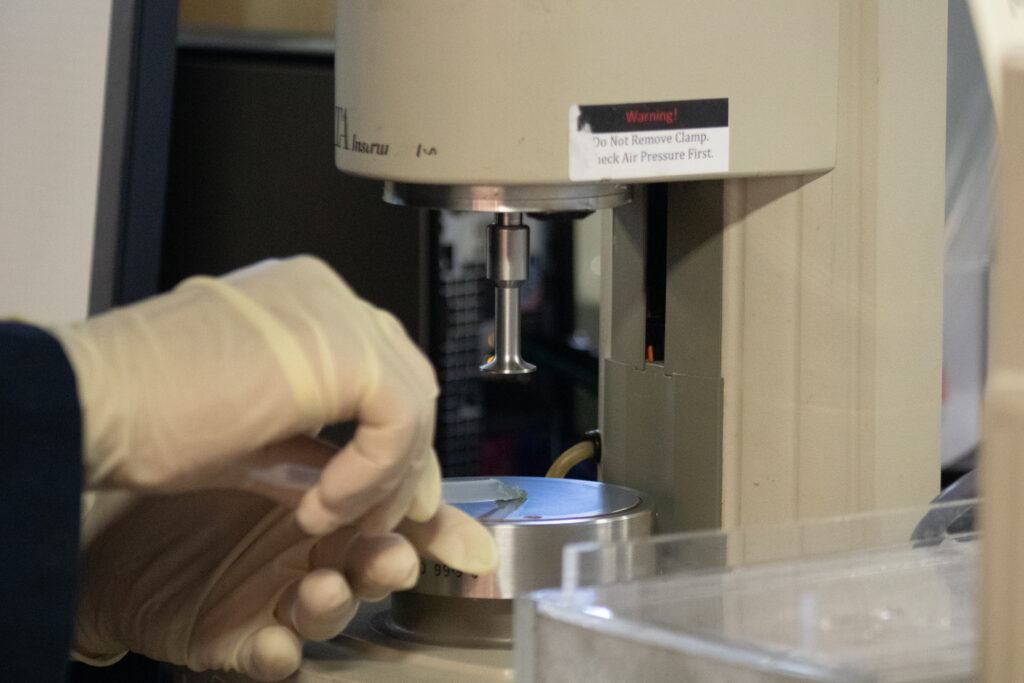
Grease Rheology
This advanced analysis technique measures various physical properties of grease related to consistency. Oscillation stress, recoverable compliance and G1 values of the grease sample are measured to assess the lubrication ability of grease.
A small sample of grease is introduced to the rheometer and heated to operating temperature. Various forces are applied to the grease to simulate working conditions and response is quantified in order to measure grease consistency.
R.U.L.E.R.
Remaining Useful Life testing measures the percent of antioxidant additive package that remains in the lubricant compared to the baseline. This test shows if the lubricant is at an elevated risk for oxidation.
A portion of the lubricant is exposed to a solvent that extracts antioxidants from the lubricant. This extract is subjected to linear sweep voltammeter which measures the change in current as a conducting compound and is subjected to linearly increasing potential. The current response of the sample is compared to a baseline to determine the percent of antioxidant protection that remains quantified in order to measure grease consistency.
